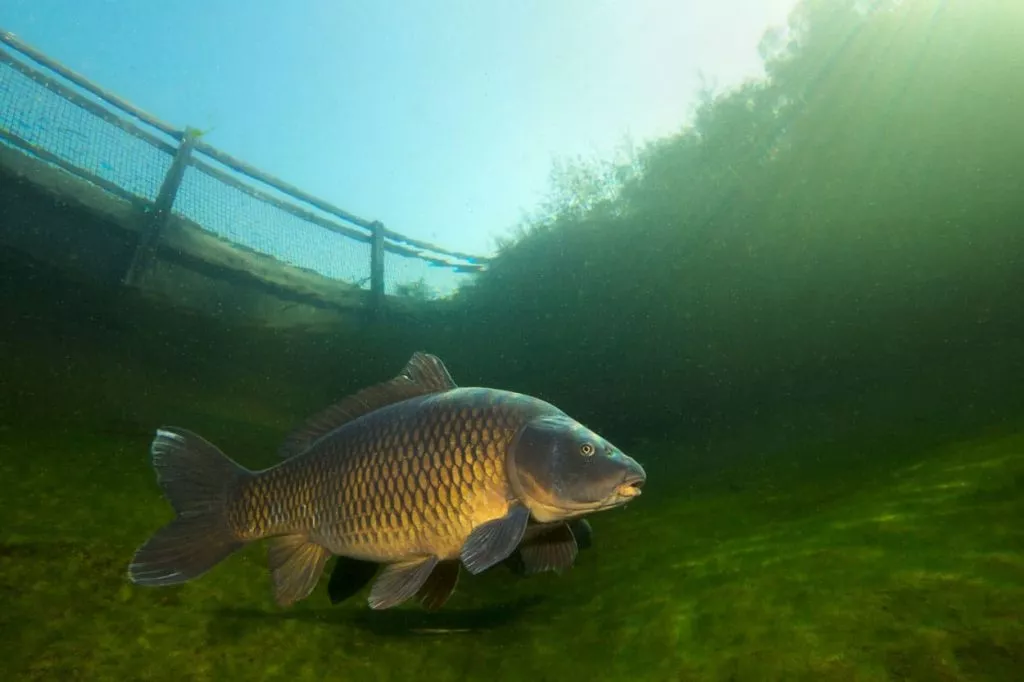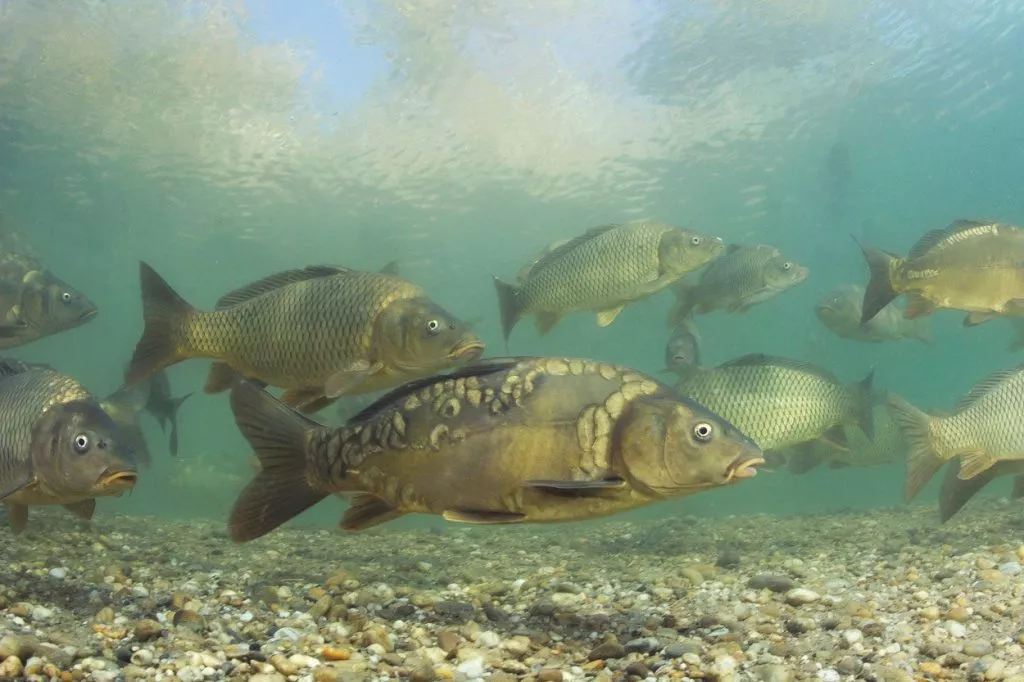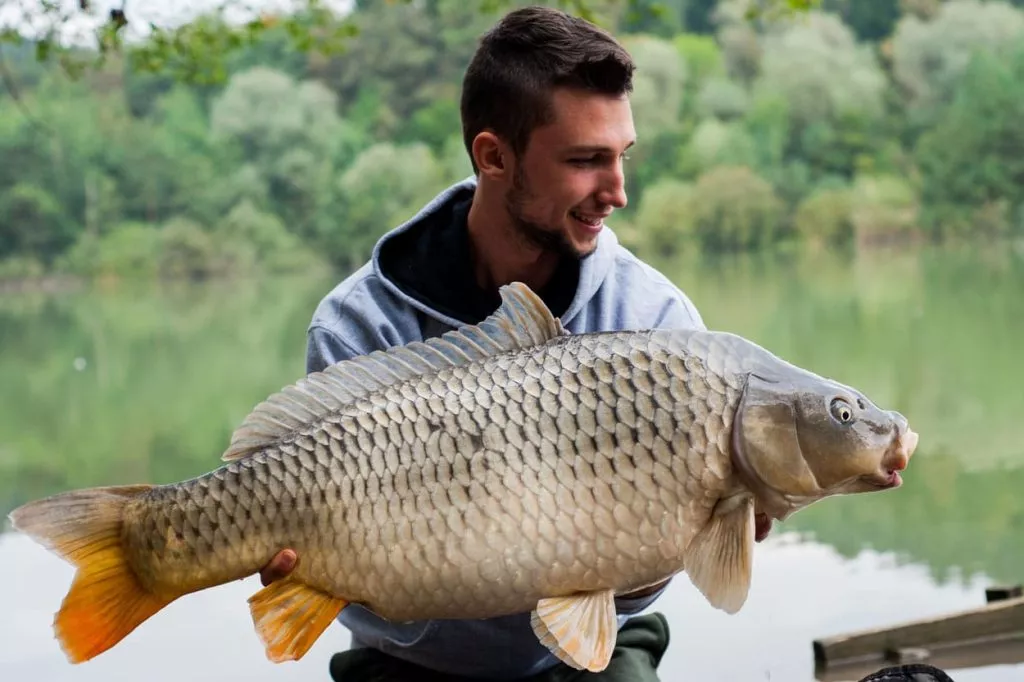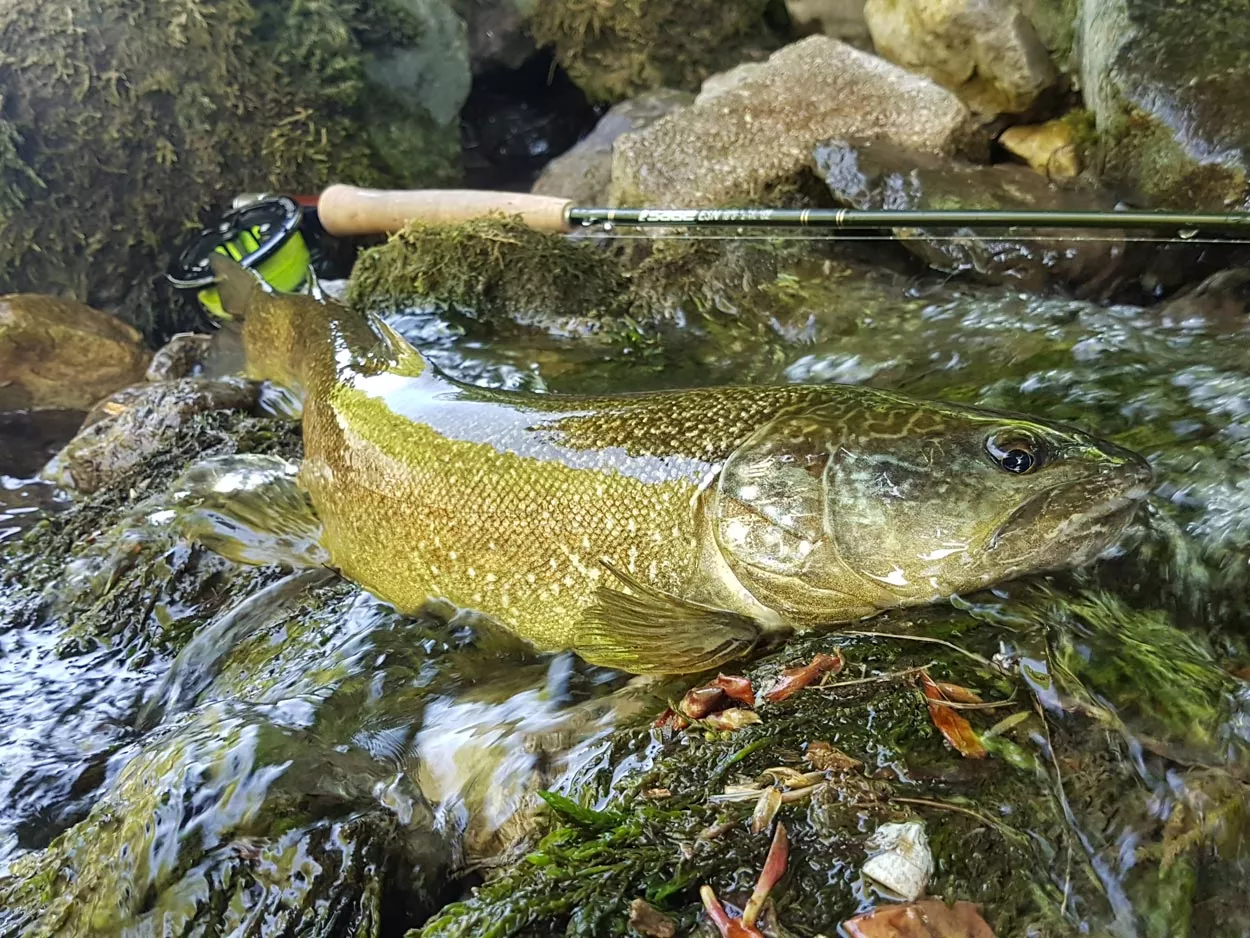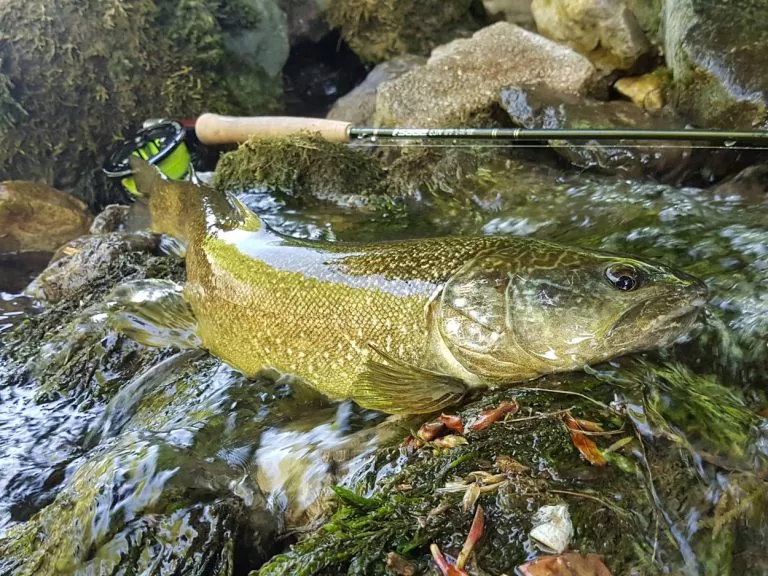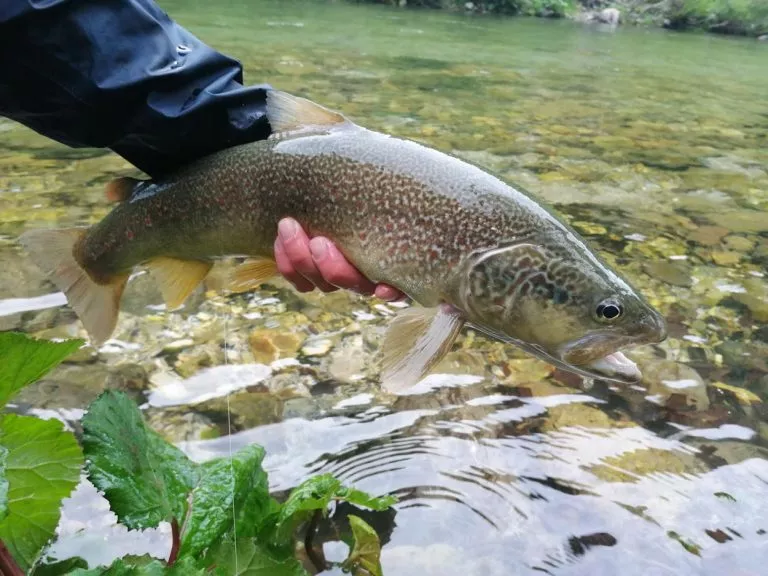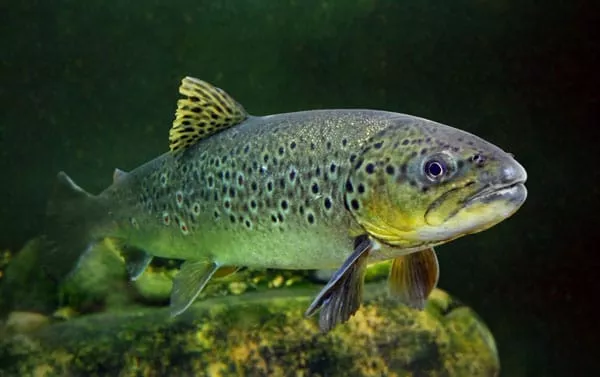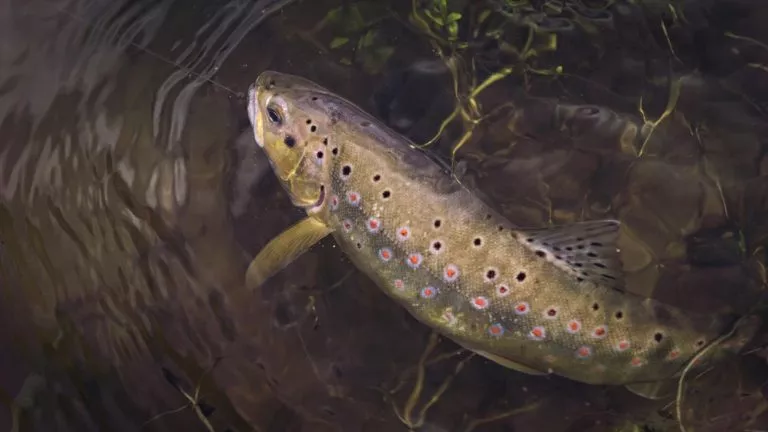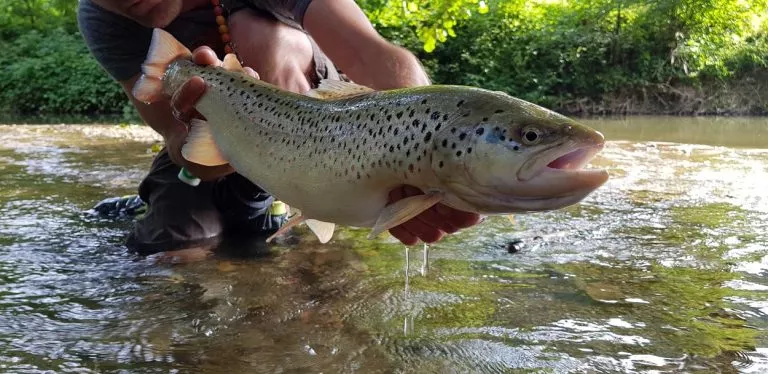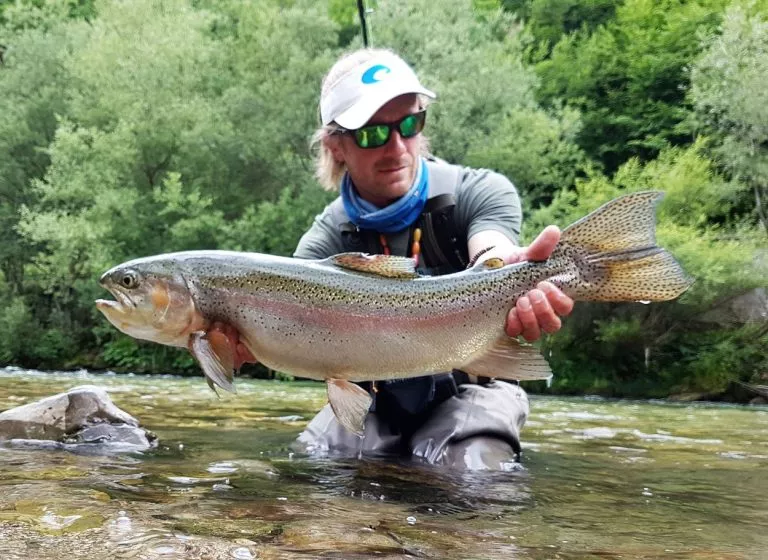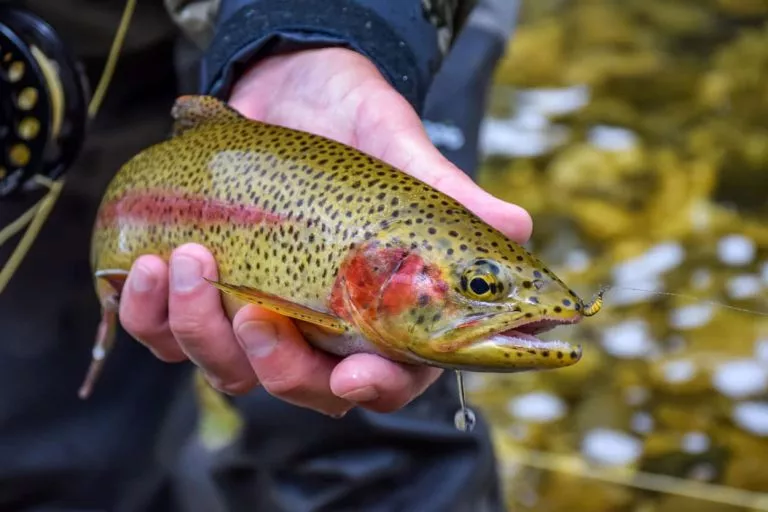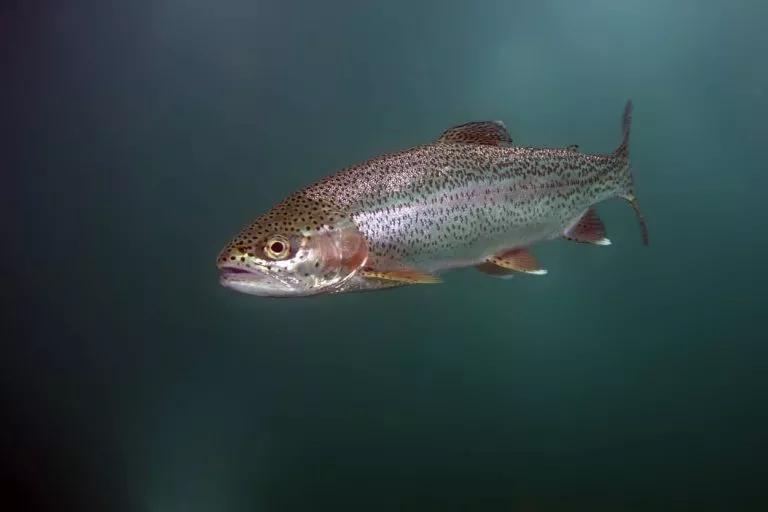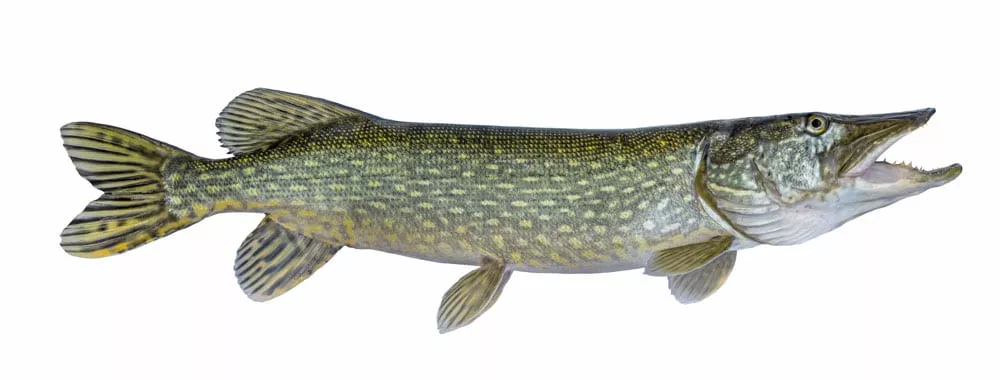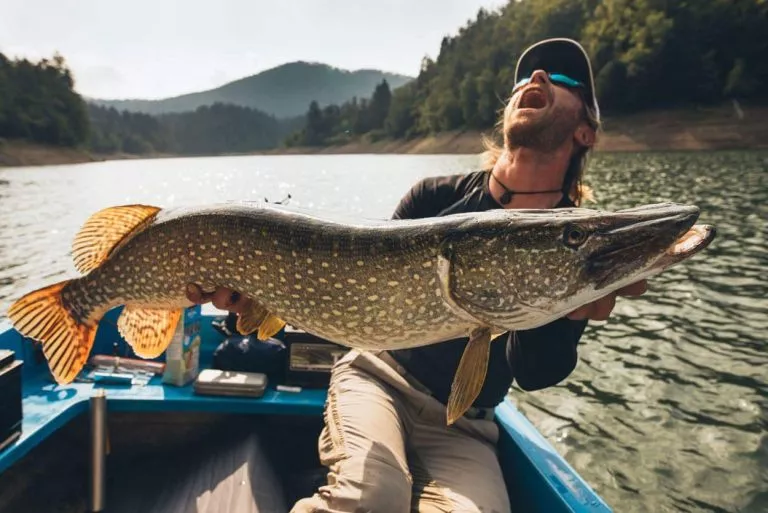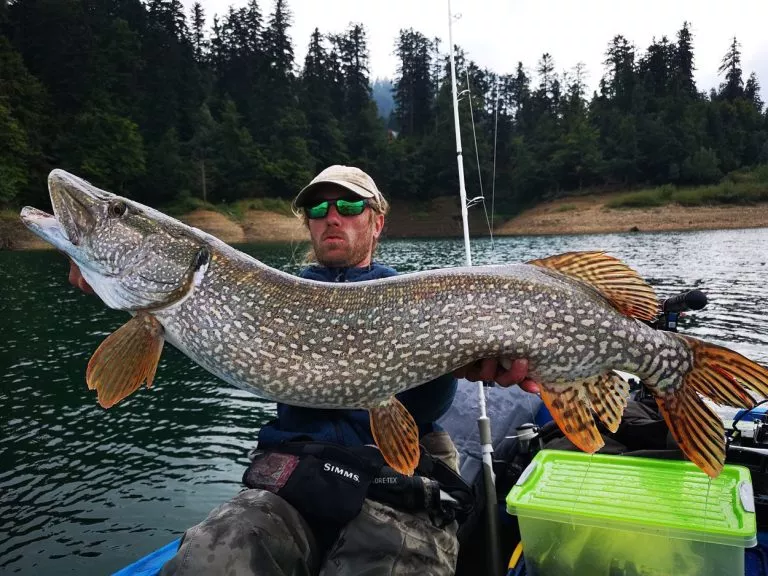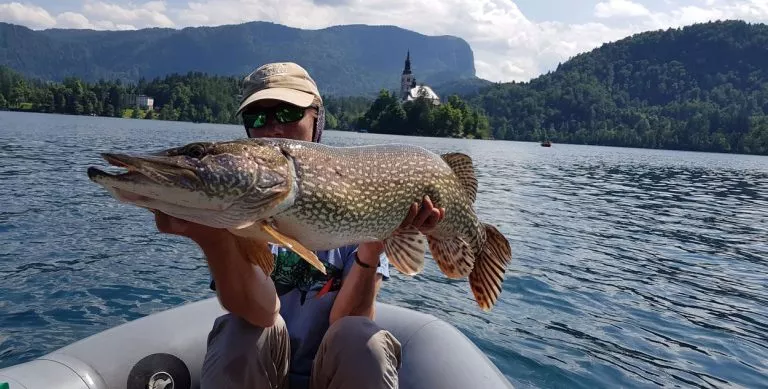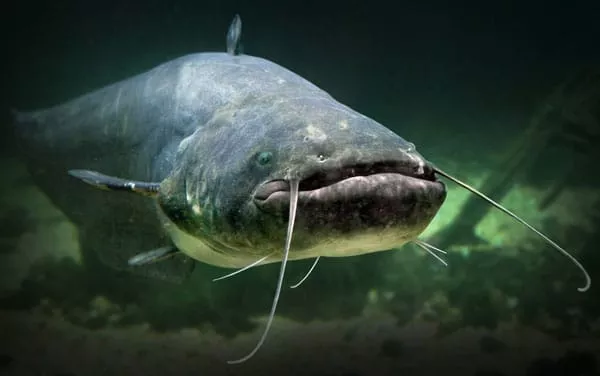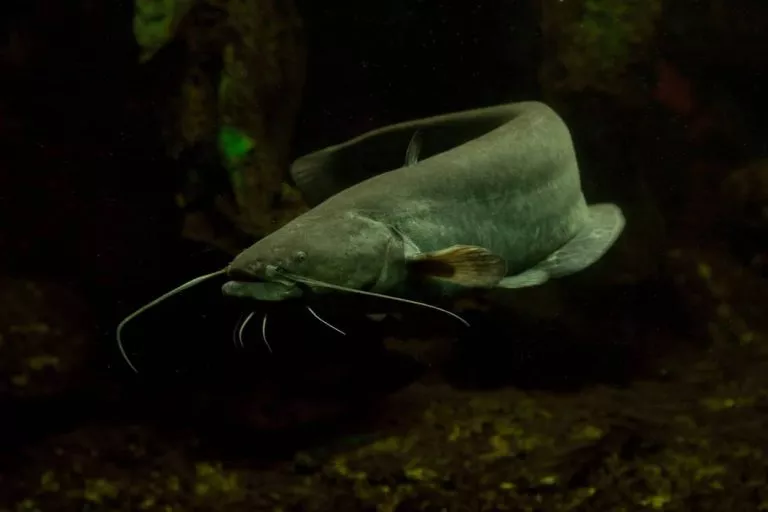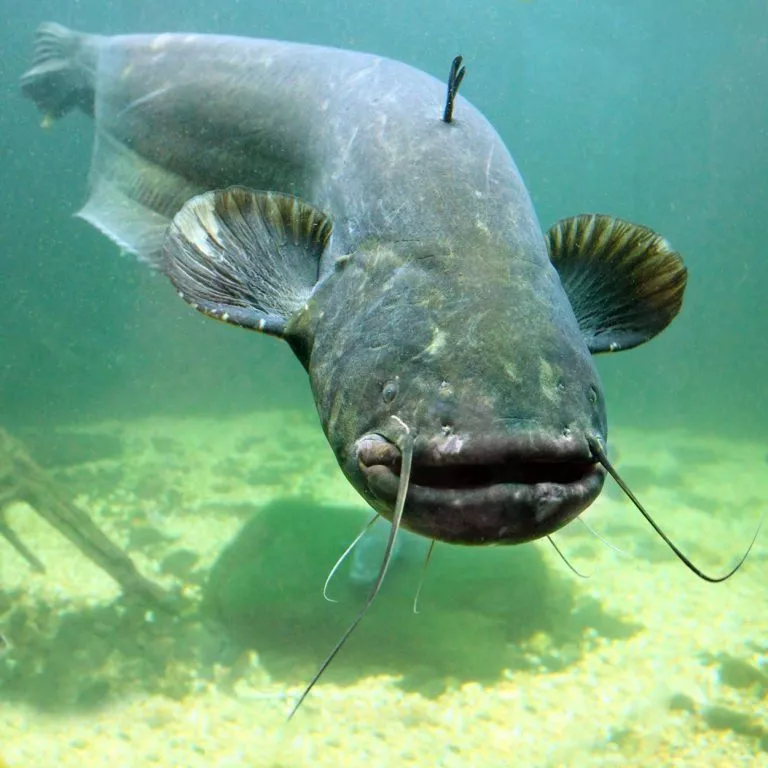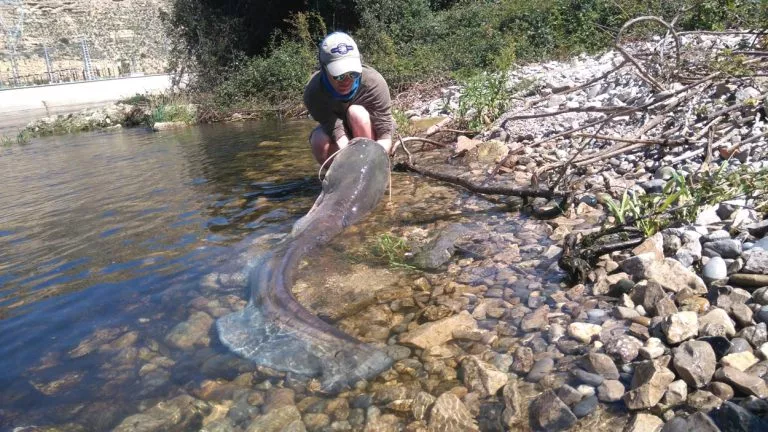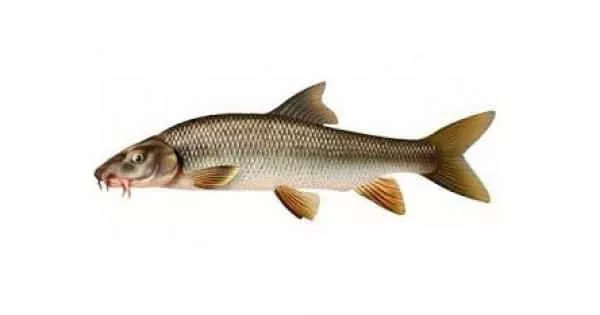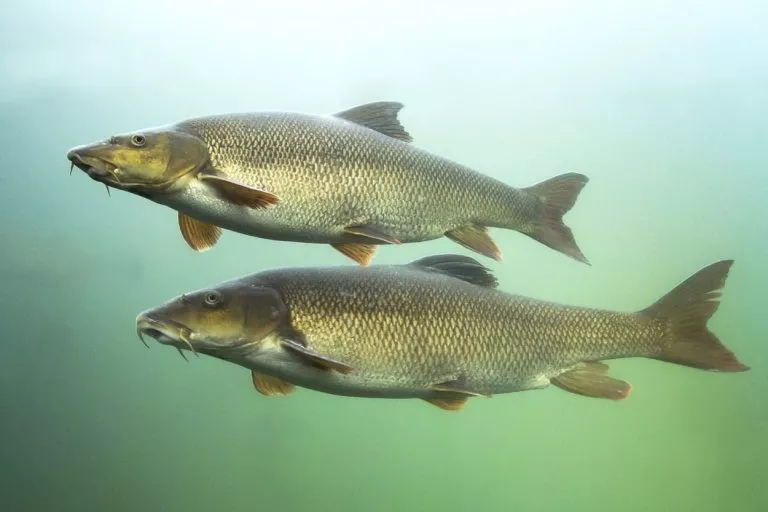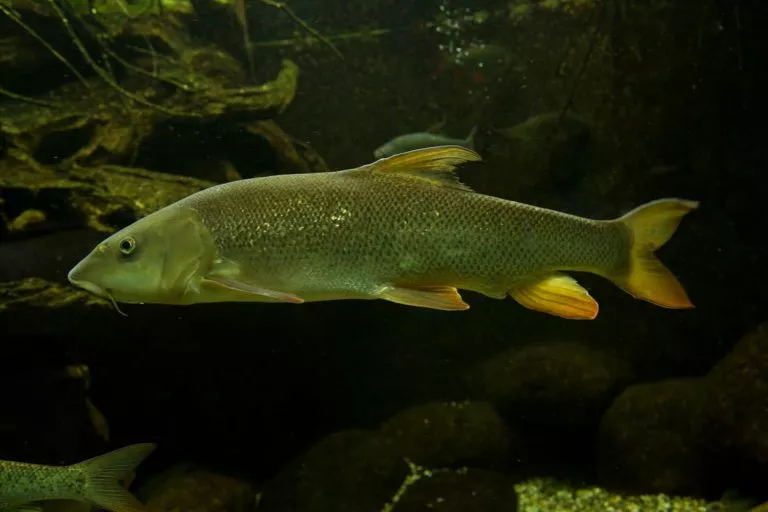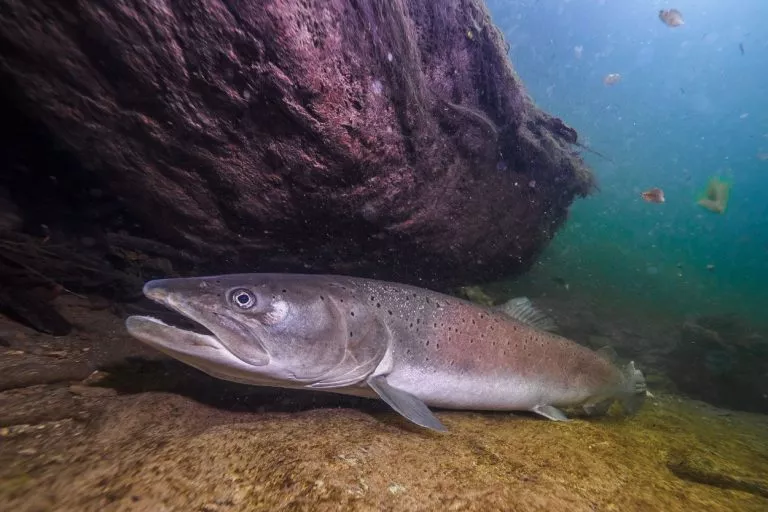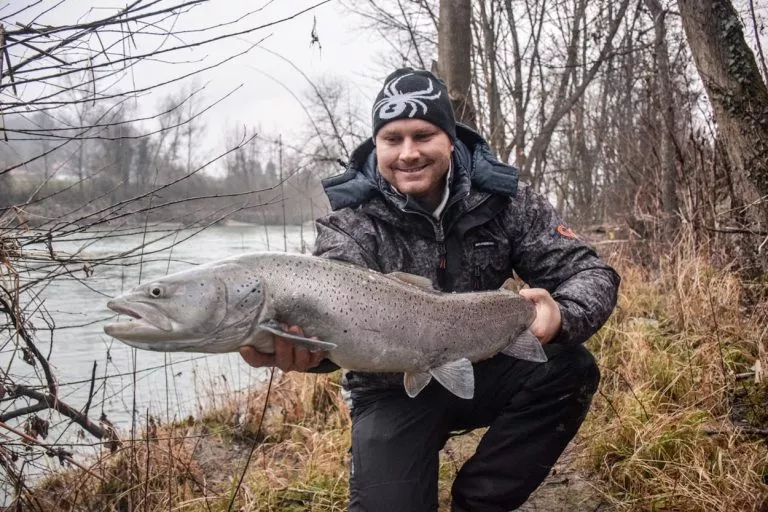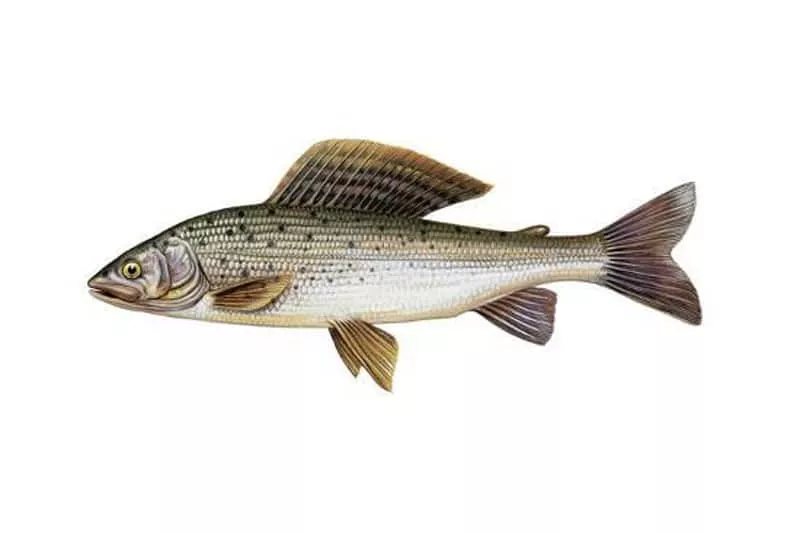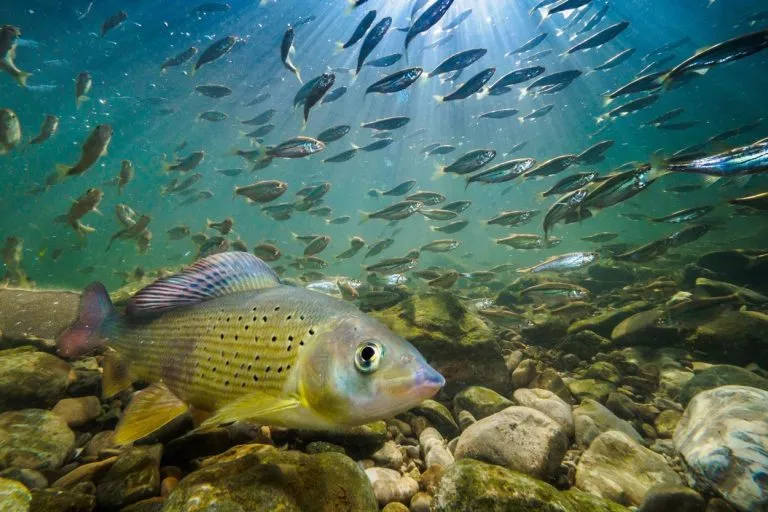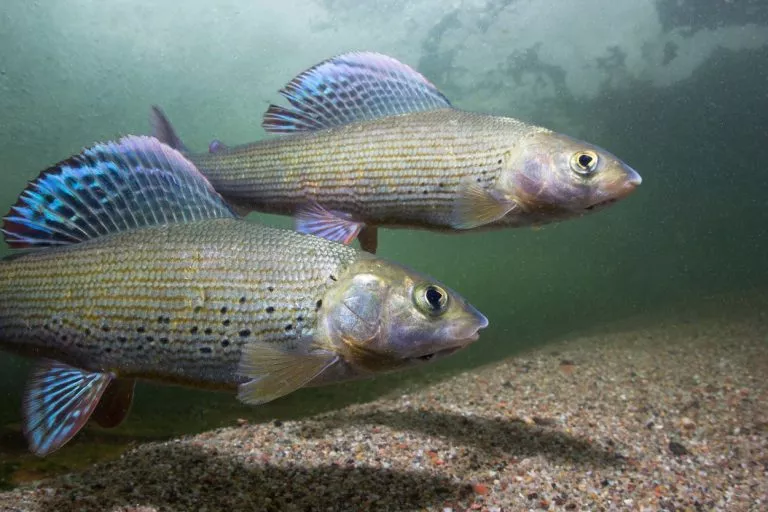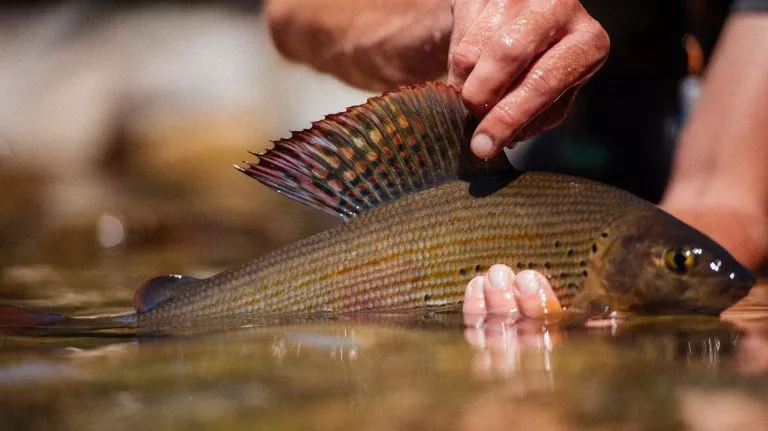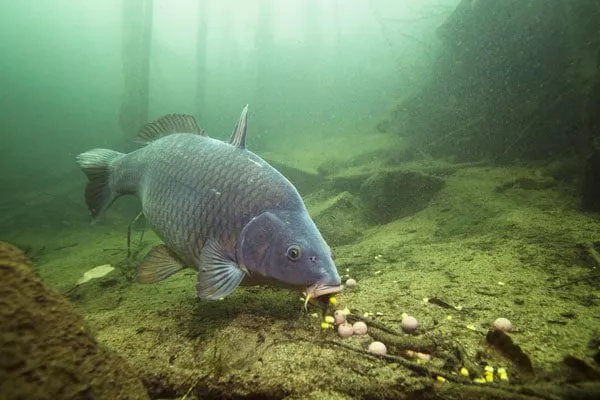
Carp
The most sought-after fish in Slovenia, very popular in sport fishing industry.
The most sought-after fish in Slovenia, very popular in sport fishing industry. With it’s cylindrical shape, big head and unique fleshy mouth ending in typical moustaches, it is easy to spot.
Season: all year
Slovenian record: 34.6kg
History
Carp suppossedly originates from Asia, although some sources state the fish is native for both, Asia and Europe.
Even in times of the Romans, carp was already mentioned as a fish easily to breed and therefore it represented an important food source. The tradition of carp farming then went on for centuries, so today carp is spread all over the world. Wild carp, who originally inhabited the waters of Eurasia has come to the edge of extinction, being replaced by stocked carp.
In Slovenia, wild carp are still present in some bigger rivers such as Sava and Drava, they can even be found in some lakes.
Body shape and color
There are 3 main types of carp;
-Common carp with scales all over the body
-Mirror carp, who has a few scales deposited over the body, however it is not full covered like common carp
-Leather carp, who has even less scales and which are only distributed near the dorsal line and at the wrist of the tail.
Wild carp, who still live in some rivers and lakes in Slovenia, are only the common ones. Their constitution is a bit different from the stocked carp. Wild carp is longer, thinner and more muscular. Dorsal fin is much bigger than in stocked carp.
Stocked carp has much higher body, shorter fins, tail is smaller and body is more round. It can be of all 3 types, mostly common and mirror.
As for the colors, carp adapt the shade according to the environment they live in and some of the color depends on the food they are eating.
They can be of different colors, from bright yellow, grey to almost black. Back is usually darker, grey, but it could also be black, hips are greenish- yellow or dark grey color, again depends of the type.Towards the belly colours brighten, scales become smaller and usually vary from almost white to yellow colour.
They also change color during the seasons, in winter months for instance, skin changes to warmer shades.
Food
They are herbivores, feeding mostly on the bottom with water plants and weed. They also like small insects which can be found on the surface or in the upper layers of water, so in the summer months they can be spotted picking flies off the water surface.
Their method for feeding on the bottom is by filtrating silt and then excreting it through their mouth, keeping only the food particles hidden in the mud.
Because of fishing, in recent years carp have been presented many new food sources which they obviously like, such as bread, corn and seeds, maggots, worms and boilies, the main choice of bait for carp anglers.
Life and spawning
Carp can live to amazing age, it's estimated they can reach the age of a 100 years.
They become sexually mature between 3th and 4th year. Spawning time is from May to July , when female hides around 300k-700k eggs in the ground between the water plants near the shallow banks.
Carp can grow from 40cm to formidable 120cm in length and can weigh over 50 kg. Wild carp tend to be longer and lighter whereas the stocked carp are shorter and heavier.
Some carp grow very fast, others reach certain weight and then stay there pretty much for the rest of their life. Before the winter they gain weight, because they need energy for the cold winter months when they dig themselves in the silt and stay there until the temperatures get higher. During this period, they move very little and it takes a lot of luck and patience to catch one. During the spring they also gain weight in preparation for spawning.
Living space
Carp can mainly be found in calm waters, such as still pools and artificial lakes as well as the natural ones, like the famous lake bled. It's also not uncommon in middle and lower reaches of Slovenia's rivers.
Carp can mainly be caught on the bottom using baits such as corn, maggots and boilies.
Another very popular method is Zig fishing, using floating foam attached to the hook, suspended in different layers of water where carp tend to move.
Third technique is surface fishing, where bread can be used to trick a carp into picking your bait from the surface.

Tina
Don't miss out
Last available spots with our fishing guides
Fast and easy booking
Fast and easy booking
Guaranteed prices
No additional costs
Very good communication with this group. And Slovenia is beautiful, food and wine is fantastic and the people are friendly. Highly recommended!
One of the most beautiful rivers I've ever seen. And the catch was more than we expected. In the begining I was taking photos of every grailing, and can proudly say that at the end of the day I had a pretty nice collection!
This was over the top thrilling. I caught a fish that was my reason to come here. I almost ruined my camera while getting a picture, but worth it :) The guidance was professional and the fishing spots were just calling for the catch.
went on this guided fly fishing with my brother. It was quite a challenge to catch a marble trout on Idrijca river, but on the second day we succeded. Hell yeah worth fishing 3 days on this river. Highly recommend
Best day of my life! You have to try fly fishing on Soca river. Žiga is #1 fly fishing guide in the world!!
Professional Fishing Guides
Our local fishers know the best spots and will help you get some great catches on the day of your fishing trip.
Only the Best
Our professional team with an in-depth knowledge of Slovenia has cherry-picked the best fishing areas in the country.
Based in Slovenia
As locals, we adapt the fishing trip to the conditions on the ground, striving to provide the best possible fishing experience at a given moment.
Trusted by Many
We are a financially protected company operating since 2014, and with thousands of satisfied customers in the past, we still put you first.
Similar fish

Unforgettable fishing experience with local fishermen on beautiful hidden spots across Slovenia.
© Copyright by
Fishing Guides Slovenia
Portfolio company of World Discovery.
Fly Fishing Slovenia
Fly Fishing Lake Bohinj
Belly Boat Fly Fishing Soča
Fly Fishing Sava
Fly Fishing Savinja
Fly Fishing Radovna
Fly Fishing Krka
Fly Fishing Idrijca
Fly Fishing Unica
Fly Fishing Soča
Spin fishing
Predator fishing Lake Bled
Belly Boat Catfishing Vipava River
Urban Belly Boat Fishing Ljubljana
Urban Huchen Fishing Ljubljana
Huchen Fishing Sava
Huchen Fishing Sava Bohinjka



